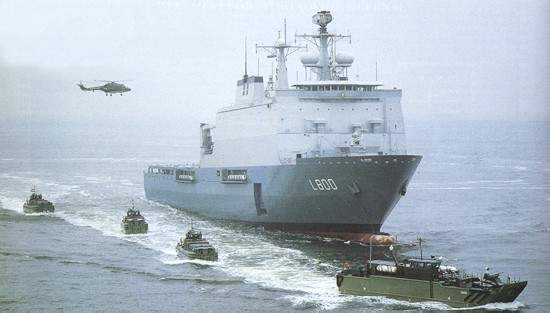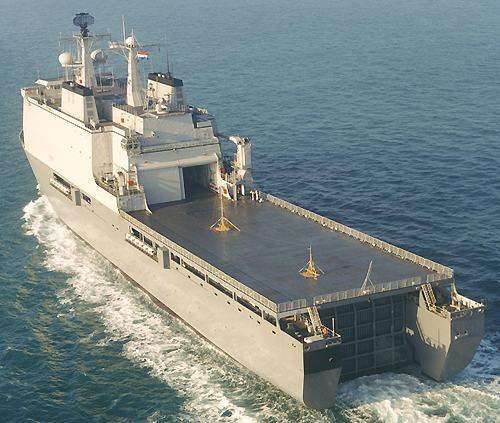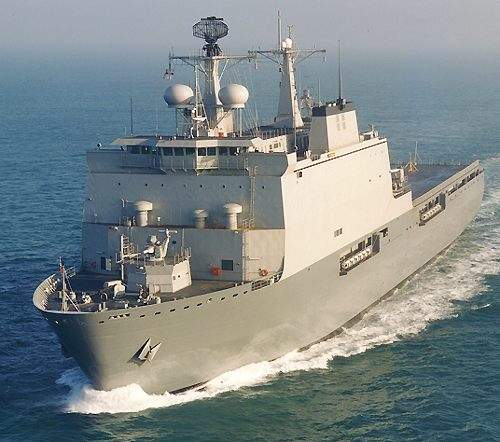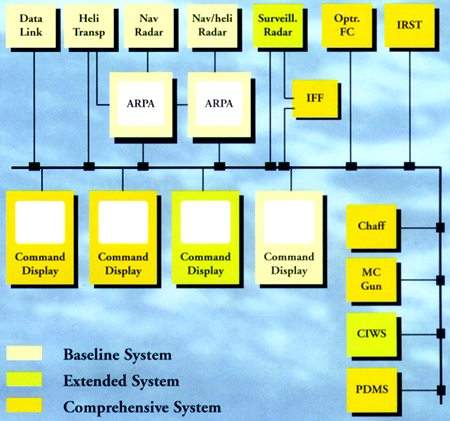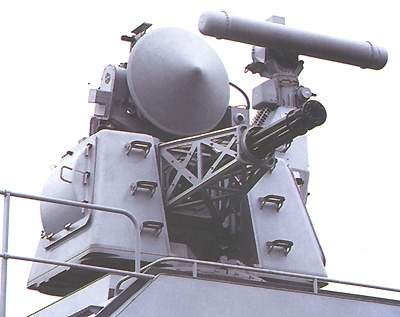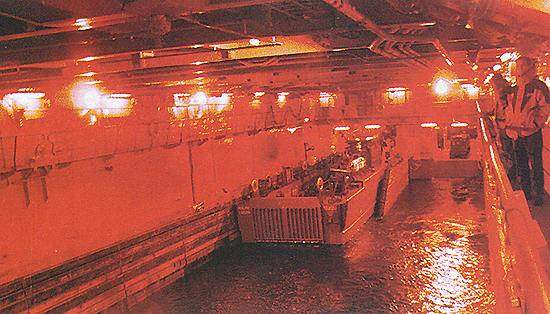Schelde Shipbuilding of the Royal Schelde Company, based in Vlissingen in the Netherlands, has built the Rotterdam Class landing platform dock (LPD) ship for the Royal Netherlands Navy.
The Royal Schelde Company, part of the Damen Shipyards Group, was awarded the contract to build HrMs Rotterdam (L801) in April 1993 – the ship was launched in 1997 and commissioned in 1998. In 2002, the Royal Netherlands Navy ordered a second Rotterdam Class LPD, HrMs Johan de Witt (L801).
L801 was christened in May 2006 and commissioned in July 2007. The new vessel is larger than the Rotterdam with a full load displacement of 16,680t, compared to 12,750t, and will be equipped with command and control facilities for a combined joint task force.
The vessel began exercises in November 2007 prior to achieving full operational status in mid-2008.
The Rotterdam LPD was the result of a joint design project between the Netherlands and Spain. Two ships, the Galicia (commissioned in 1998) and the Castilia (2001), were built for the Spanish Navy by Bazan (now Navantia).
In March 2004, HrMs Rotterdam was deployed to Liberia in support of the UN mission in the African nation (UNMIL). In November 2008, Defence Material Organisation (DMO) of the Netherlands Ministry of Defence awarded Damen Schelde Naval Shipbuilding a contract for the replacement of the side ramp on the starboard side of LPD Rotterdam.
The NH90 naval helicopter was tested for landing on the LPD Rotterdam in October 2011. The NH90 is produced by NHIndustries.
Design of the Rotterdam Class LPD vessel
The overall length of the hull of the Rotterdam Class is 162.2m, its breadth is 25m and its maximum draught is 5.9m. The maximum displacement is 14,000t. Rotterdam is capable of carrying out helicopter operations up to sea state six. Operations with landing craft are possible up to sea state four.
Amphibious tasks include the ability to embark, transport and disembark one Marine Corps battalion, including the associated combat and logistic support vehicles and equipment. The ship carries provisions and stores for battalion transportation for more than ten days. The vessel is also capable of transferring reserve forces and for the evacuation of casualties.
The ship is operated by a crew of 124, including 13 officers. Accommodation is also provided for a fully equipped marine battalion or up to 613 troops. HrMs Rotterdam has facilities to transport 170 armoured personnel carriers, or 33 main battle tanks, plus docking facilities for up to six landing craft, for example six LCVP mk3, four LCU mk9 or four LCM 8 landing craft.
HrMs Rotterdam has extensive fully equipped hospital facilities with a medical treatment room, a medical operating theatre and a medical laboratory.
Weapon systems installed on the landing platform dock
Two Thales Nederland (formerly Signaal) Goalkeeper close in weapon systems are installed on the bow deck and on the upper deck immediately overlooking the helicopter landing deck.
Goalkeeper’s Gatling-principle 30mm gun provides a maximum firing rate of 4,200 rounds a minute with a range of 1,500m.
To support the Goalkeeper CIWS, a Thales Nederland IRSCAN infrared search and track system is fitted. IRSCAN can detect and track targets to a maximum range of 20km.
Four Oerlikon 20mm guns are located on the bridge deck. Rotterdam has the capacity to carry up to 36 torpedoes in the magazine area.
Aircraft carrying capabilities
The 58m x 25m flight deck has landing spots for two large helicopters, such as the EH101.
The aircraft hangar is sufficiently large to accommodate up to four EH101 helicopter or six medium-size helicopters, such as the Super Puma or the NH90. The hangar has extensive helicopter maintenance and spares facilities.
Countermeasures and sensors of Schelde Shipbuilding’s Rotterdam Class LPD
The ship’s decoy system consists of four SRBOC (super rapid blooming offboard countermeasures) decoy launchers from Lockheed Martin Sippican, which fire infrared decoys and chaff for confusion and distraction of incoming anti-ship missiles.
It is also fitted with the AN/SLQ-25 Nixie towed torpedo decoy, from Argon ST of Fairfax, Virginia.
The radar suite includes: Thales Nederland DA08 air and surface search radar operating at E and F bands, Kelvin Hughes ARPA surface search radar operating at I band and two sets of navigation and aviation radar operating at I band.
HrMs Johan de Witt has been fitted with the Thales Nederland VARIANT 2D mk2 air and surface surveillance radar.
Propulsion of the Royal Netherlands Navy-used vessels
The ship is equipped with four Stork Wartsila diesel generators, model 12SW28 generating 14MW and two Holec motors generating 12MW, driving two shafts. The bow thruster is rated at 185kW. The top speed is more than 18kt, while the range at 12kt is more than 6,000 miles.
The Global Naval Surface Combatants and Warfare Systems Market 2011-2021
This project forms part of our recent analysis and forecasts of the global naval surface combatants and warfare systems market available from our business information platform Strategic Defence Intelligence. For more information click here or contact us: EMEA: +44 20 7936 6783; Americas: +1 415 439 4914; Asia Pacific: +61 2 9947 9709 or via email.

